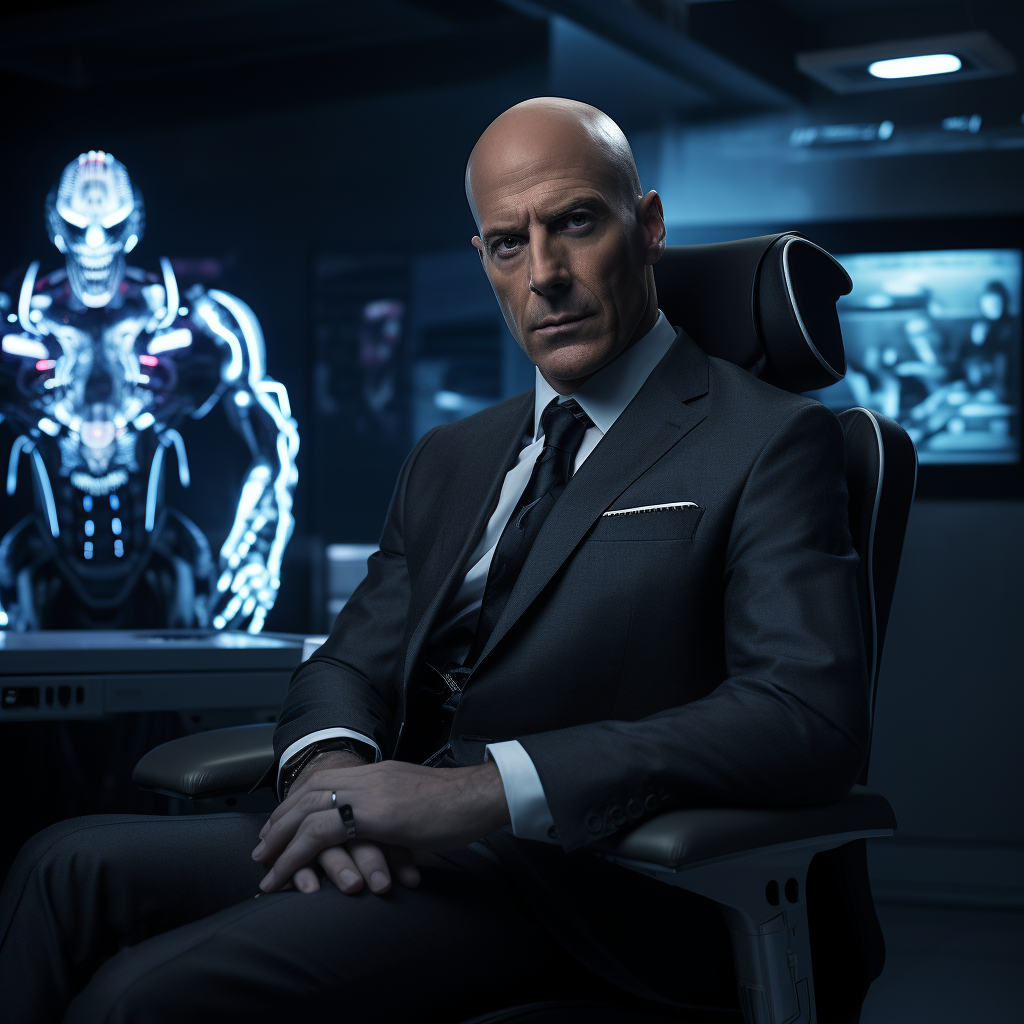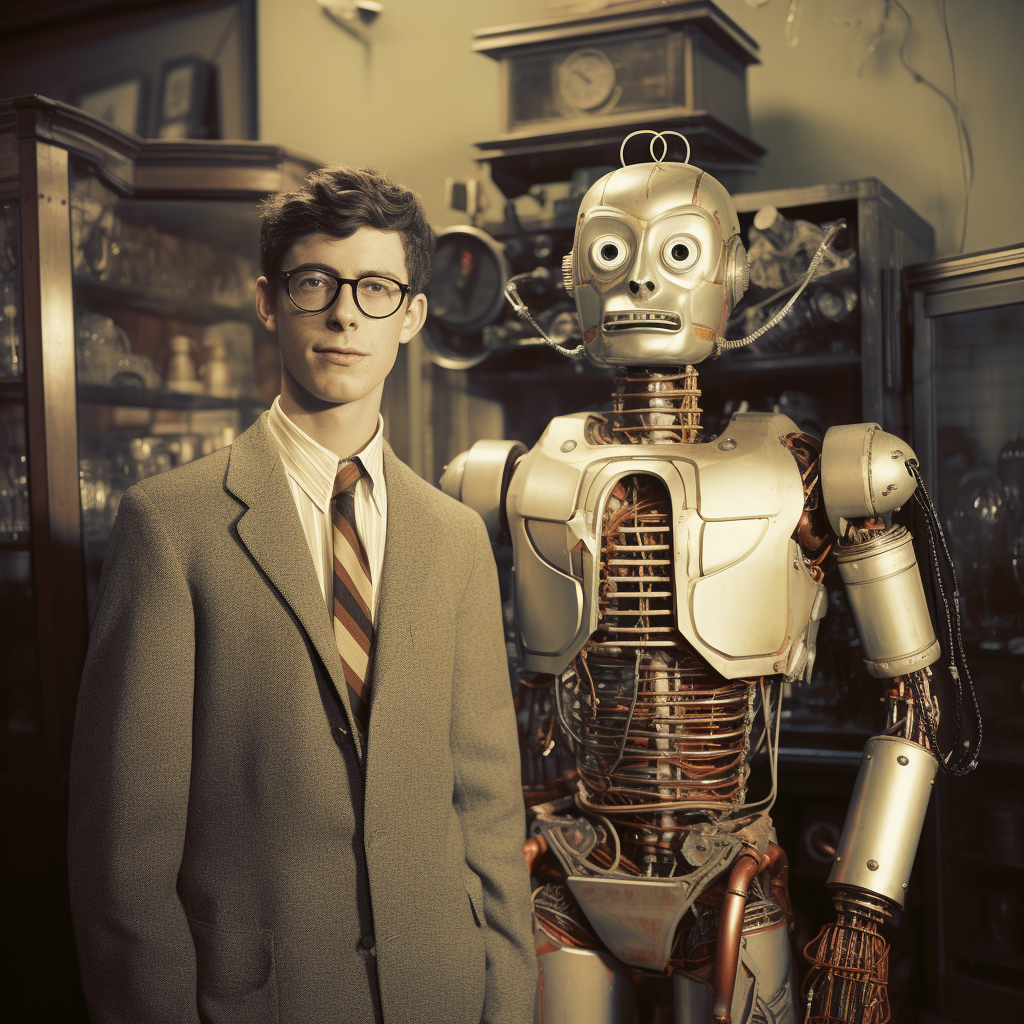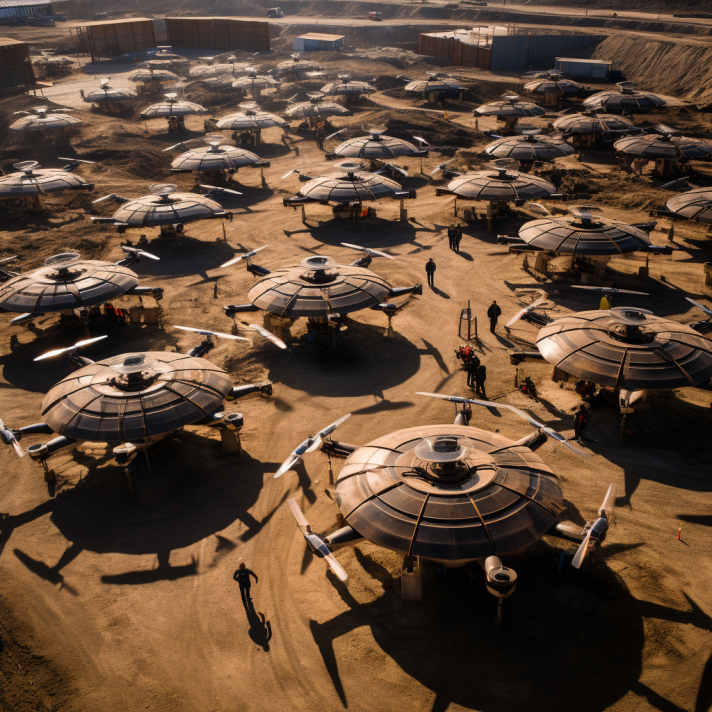The Villain's Perspective: An Exclusive Profile of Dr. Malevolent
Dive into the mind of Doctor Malevolent, a villain who challenges the very foundations of heroism and villainy. This exclusive profile explores his philosophy, technological prowess, and the public's complex feelings toward him.

In a world teeming with heroes, the villains often remain in the shadows, their motivations and philosophies obscured by their nefarious deeds. One such figure who has captured the public's imagination—and fear—is Doctor Malevolent. Today, we pull back the curtain and delve into the mind of this enigmatic figure.
Early Life and Transformation
Born Victor Malloy in a small town, he was the eldest of two children in a middle-class family. His father was a mechanic, and his mother worked as a nurse. From a young age, Victor displayed an extraordinary aptitude for science and technology. His parents, recognizing his potential, made sacrifices to ensure he had access to the best educational opportunities available.
Victor excelled in academics, winning science fairs and earning scholarships that paved the way for his higher education. By his mid-20s, he had multiple advanced degrees in fields like robotics, artificial intelligence, and quantum computing. He was a rising star in the scientific community, and his research had the potential to revolutionize multiple industries. Healthcare, transportation, and even governance could have been transformed by his innovations.
Victor's life seemed to be on an upward trajectory until tragedy struck. A lab accident involving an experimental energy source resulted in a catastrophic explosion. The accident claimed the life of his younger sister, Emily, who had been visiting him at the lab. The event was a devastating blow to Victor, both emotionally and professionally. Investigations into the accident led to the closure of his lab, and he found himself ostracized by the scientific community he had once been a part of.
Consumed by guilt, Victor went into a period of self-imposed exile. He traveled the world, seeking solace and answers. It was during this time that he began to question the ethical implications of his work and the role of technology in society. He became increasingly disillusioned with humanity's capacity for good and started to develop a radical new worldview.
The accident with Emily became the catalyst for his transformation. Victor realized that the world was flawed not because of a lack of technological advancement, but because of human emotion and irrationality. It was then that he decided to use his intellect and technological prowess for a new purpose—to create a world governed by the cold, calculated logic of machines.
Victor Malloy ceased to exist, and in his place rose Doctor Malevolent, a man with a new identity and a new mission. Armed with his technological innovations and fueled by his radical beliefs, he set out to reshape the world according to his vision, regardless of the cost.

The Philosophy of Malevolence
Doctor Malevolent is a unique figure in the landscape of villains. He doesn't engage in villainy for personal gain, nor does he relish in causing chaos or destruction. Instead, his actions are guided by a complex and deeply held philosophy that challenges conventional wisdom about morality, governance, and human nature.
At the core of his philosophy is a profound skepticism about humanity's ability to govern itself effectively. "Human history is a litany of failures," he argues. "Wars, famines, environmental degradation—these are not isolated incidents but systemic outcomes of a flawed species."
His critique extends to the very foundations of human society, from democracy to capitalism. "These systems are built on the illusion of fairness and rationality, but they are inherently flawed," he contends. "They perpetuate inequality and are easily manipulated by those in power."
Doctor Malevolent's solution is radical: a new world order governed by artificial intelligence and advanced algorithms. In his envisioned society, human emotion and subjectivity are removed from decision-making processes. "Imagine a world where resources are allocated based on empirical data, where justice is dispensed without bias, and where policies are formulated based on long-term sustainability rather than short-term political gains," he elaborates.
To him, superheroes are symptomatic of the problem. "They are self-appointed guardians operating outside the law, driven by their own emotional impulses," he says. "They add an element of unpredictability and chaos to an already unstable world."
But Doctor Malevolent is not a nihilist; he believes in the potential for a better world. "Humanity has reached a technological tipping point," he asserts. "We have the tools to create a utopia, but we lack the wisdom to use them effectively. That's where I come in."
His ultimate goal is ambitious and unsettling: to gradually replace human governance with machine intelligence. "It will be a transition, not a revolution," he assures. "But it's a necessary step for the survival and advancement of our species."

The Man Behind the Machines
While Doctor Malevolent may not possess superhuman abilities, his genius in the realm of technology more than compensates for it. He is a master of robotics, artificial intelligence, and cybernetics, and his innovations in these fields are nothing short of revolutionary.
His technological arsenal is vast and varied, comprising an array of drones, robots, and automated systems. Each machine is a marvel of engineering, equipped with state-of-the-art weaponry, advanced surveillance capabilities, and self-repair mechanisms. They are not mere tools but extensions of his will, designed to execute his complex strategies with surgical precision.
But the crown jewel of his technological empire is "Nemesis," an artificial intelligence of his own creation. Nemesis is a breakthrough in AI research, capable of learning, adapting, and evolving at an unprecedented rate. It can hack into the most secure databases, manipulate digital infrastructures, and even engage in psychological warfare by analyzing and exploiting human behavior.
"Nemesis is not just a program; it's the future," Doctor Malevolent claims. "It embodies the pinnacle of machine intelligence, capable of making decisions based on logic and data, free from the constraints of human emotion and bias."
What sets Doctor Malevolent apart from other villains is not just his technological expertise but the way he integrates it into his broader philosophy. His machines are not just means to an end; they are the embodiment of his vision for a new world order. "My creations are not just machines; they are the vanguard of a new era," he explains.
His technological prowess also serves as a critique of modern society's dependence on and misuse of technology. "We live in a world addicted to technology, yet we lack the wisdom to use it responsibly," he observes. "I intend to correct that imbalance."

High-Profile Encounters
Doctor Malevolent has been at the center of numerous high-profile incidents that have left an indelible mark on public consciousness. Each of his actions is meticulously planned and executed, demonstrating not just his technological prowess but also his strategic acumen.
One of his most audacious schemes was the orchestration of a city-wide blackout in Metrohaven, a bustling metropolis. Utilizing a network of hacked smart grids and a custom-built electromagnetic pulse device, he plunged the city into darkness for 48 hours. The blackout was not just an act of sabotage; it was a demonstration of vulnerability. "Our systems are fragile, easily manipulated," he commented afterward. "This was a warning."
In another daring move, Doctor Malevolent attempted to replace key government officials with highly advanced robotic duplicates. These duplicates were not mere automatons but sophisticated androids equipped with AI capable of mimicking human behavior. The plan was foiled at the last minute, but the implications were chilling. "Imagine a government free from corruption, inefficiency, and human error," he mused. "That was the future I offered."
Perhaps his most publicized encounter was a high-stakes battle with the renowned superhero, Solarflare. The two engaged in a fierce duel that spanned across land, air, and cyberspace, as Doctor Malevolent deployed an array of drones and utilized Nemesis to counter Solarflare's solar-powered abilities. Though the battle ended in a stalemate, it raised questions about the effectiveness of traditional heroism in the face of such advanced technological threats.
Each of these encounters has been more than a mere clash of forces; they have been ideological battles that challenge the status quo. Doctor Malevolent uses these high-profile actions to further his philosophy and to demonstrate the limitations of current systems and the heroes who defend them.

Public Opinion
Doctor Malevolent is a divisive figure who has sparked intense debate among the public. While the majority view him as a dangerous threat that must be neutralized, there is a growing minority who find his critique of human society compelling. Online forums and social media platforms are rife with discussions dissecting his actions and philosophy, and even some academics have begun to explore the ethical questions he raises.
Public sentiment is further complicated by the failures and shortcomings of existing systems, which Doctor Malevolent's actions often expose. For instance, the Metrohaven blackout led to a surge in discussions about infrastructure vulnerabilities, and his attempt to replace government officials with androids sparked debates on political corruption and inefficiency.
The public's mixed feelings about Doctor Malevolent reflect the complexities of the world we live in—a world grappling with rapid technological advancements, ethical ambiguities, and a growing sense of disillusionment with traditional institutions and heroes.
It's clear that Doctor Malevolent has become more than just a villain; he's a cultural phenomenon that forces us to confront uncomfortable truths about ourselves and the society we live in. His actions and philosophy challenge us to question the status quo and to consider whether the existing order is truly the best we can do—or whether a radical rethinking is needed.
In a world filled with clear-cut heroes and villains, Doctor Malevolent defies easy categorization. He challenges us to look beyond the surface, to question our assumptions, and to engage in a deeper dialogue about the ethical and societal implications of heroism and villainy. As we continue to navigate the complexities of this alternate reality, figures like Doctor Malevolent serve as catalysts for critical thought and debate. Whether you agree with him or not, his impact is undeniable, and his story is one that will continue to unfold in the pages of history. Stay tuned to "The Super Sentinel" for ongoing coverage of Doctor Malevolent and other figures who shape our world.